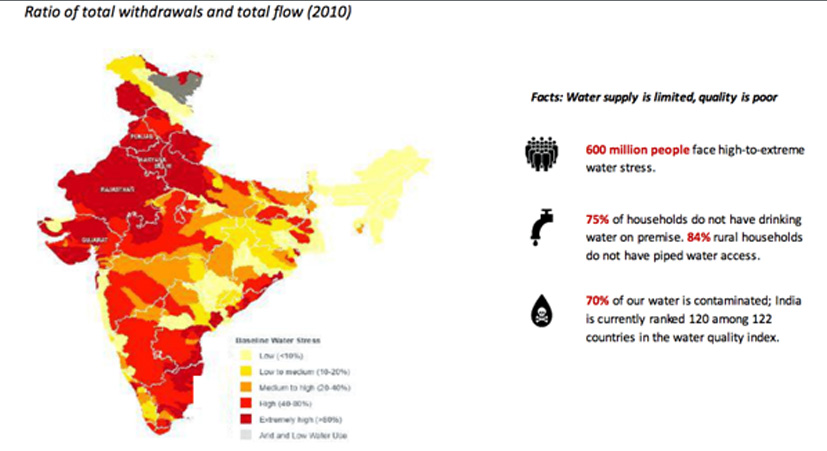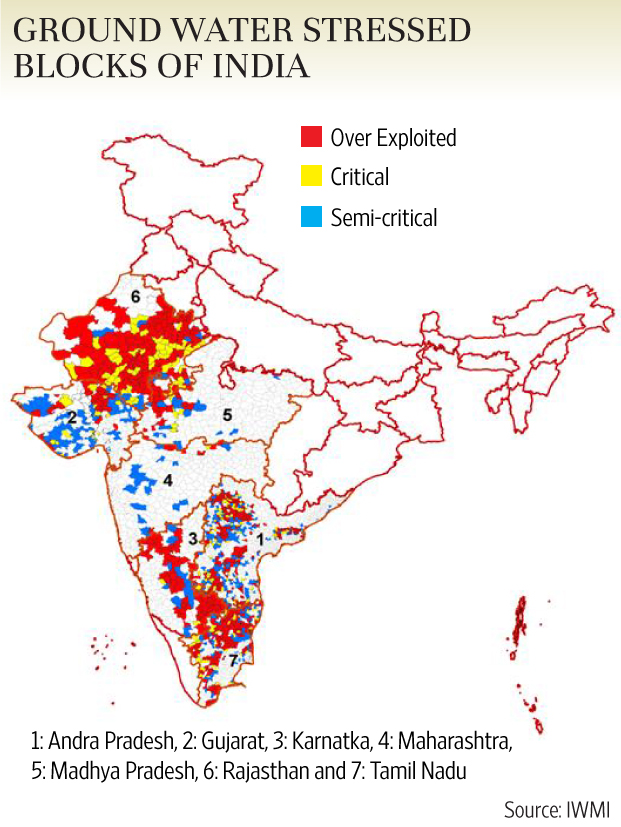India’s Water Crisis – Why Groundwater Recharge is Key
India’s sixth largest city Chennai, has run out of water. The NITI Aayog has released a study, stating that India is facing its worst water crisis in history, and that the demand for potable water through the country will outstrip supply by 2030 if steps are not taken. The report goes on to say that nearly 600 million Indians face high to extreme water stress, and about 2 lakh people die every year due to inadequate access to safe water. Twenty-one cities including Delhi, Bengaluru, Chennai, and Hyderabad will run out of groundwater by 2020, affecting 100 million people. Moreover groundwater resources, which account for 40% of India’s water supply are being depleted at “unsustainable” rates and upto 70% of India’s water supply is contaminated.


Baseline Water Stress in India
Source: Niti Aayog Composite Water Resources Management Report
(Read about CSR’s initiative for water conservation and environment here.)
This crisis is real, and it is happening now. The intensification of human activity, coupled with extreme weather events caused by climate change can lead to longer periods of droughts and floods (India is facing its worst drought in decades, resulting from a deadly heat-wave and delayed monsoons). These extreme conditions increase the demand for groundwater – which is already a critical and overexploited resource in the country. Enhancing the underground storage of water is a practical and robust measure to augment the availability of fresh water, and to enhance climate change adaption. It is therefore imperative that groundwater play a more prominent role in climate debates.
These unsustainable levels of exploitation have serious implications for the sustainability of agriculture, economic growth and livelihoods, as well as long term food security. A 2012 report by the World Bank notes that India is the largest user of groundwater in the world (“using an estimated 230 cubic kilometres of groundwater per year – over a quarter of the global total”). The report further estimated that more than 60% of irrigated agriculture and 85% of drinking water supplies are dependent on ground water. The potential social and economic consequences of continued weak or non-existent groundwater management are serious. The implications are also disturbing for a plethora of reasons: for sustaining economic growth and local livelihoods, and for environmental sustainability. The consequences will be most severe for vulnerable populations.
Noting the high percentage of irrigated agriculture that is dependent on groundwater, it is important to notes that in states, such as Rajasthan (which is one of the driest states in the country) it is primarily women who work in the fields and perform agricultural tasks and labour. However, several studies have highlighted that despite the fact that it is the women who perform the bulk of agricultural labour in fields in India, they are largely excluded from decision-making activities . The role of women in water conservation and recharge is integral. Providing women with a platform to engage with water conservation and recharge on both a policy level, as well as a ground level is essential. By acknowledging the role that women play in agriculture, and water-related work and building their capacities in this regard, so they are not “invisible workers”, women’s voices and leadership will increase, along with their participation in decision making, and therefore social and economic life.
Read about CSR’s initiative for water conservation and environment here.





